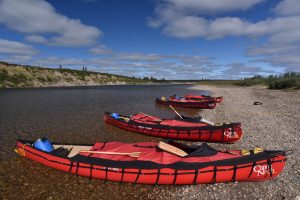
In order to address this question you will need to refer to Sparke’s article, “A Map that Roared and an Original Atlas: Canada, Cartography, and the Narration of Nation.” You can easily find this article online. Read the section titled: “Contrapuntal Cartographies” (468 – 470). Write a blog that explains Sparke’s analysis of what Judge McEachern might have meant by this statement: “We’ll call this the map that roared.”
Oral record versus written record.
A case that tried to secure title over a massive area of land in British Columbia for the Wet’suwet’en and Gitxsan people was controversial in a few ways. The plaintiffs wanted to protect the land from logging and have title over their land that they fished and lived on for generations. The case included the both groups creating maps with Indigenous names in order to for the courts to conceptualize their claim. Chief Justice McEachern was quoted as saying “We’ll call this the map that roared” when opening up the maps that were presented to him. Wet’suwet’en and Gitxsan people had to project their knowledge of the land onto a map. The comment “roared” was justifiably criticized but might also speak to the intensity of the indigenous groups to prove their case. It is clear that this case was of vital importance for the Wet’suwet’en and Gitxsan people and would also enable other indigenous groups in the province to do the same.
The indigenous people had to contend in a sphere that was not created by them or for them. They had to project their evidence in a European court. They had to adapt their evidence and present it in a European medium in order for it to be understood.
Chamberlain shares his thoughts on Judge McEachern and the trial in his article “The corn people have a song too. It is very good”: On Beauty, Truth, and Goodness. Chamberlain does not defend McEachern but understands where he is coming from when he says “”It’s not going to do any good to sing it to me,” he said. “I have a tin ear.” He is a judge in a court that is looking for truths and fact. His uneducated perspective on music and indigenous storytelling meant that Mary Johnson’s singing could not sway his judgment. To the judge, he needed physical evidence in the form that is typical to courtroom and there is no precedence to oral story within a song.
The reality of the case is that the plaintiffs might have worked through the case had they adapted their evidence for the specific judge. However, I am not shocked that the Indigenous groups wanted to stay true to their traditional knowledge. They have had to adapt to the colonists and did not want to give in to the oppression in a system is not meant to support them.
CHAMBERLIN, J. EDWARD. “‘The Corn People Have a Song Too. It Is Very Good’: On Beauty, Truth, and Goodness.” Studies in American Indian Literatures, vol. 21, no. 3, 2009, pp. 66–89. JSTOR, www.jstor.org/stable/20737490.
Sparke, Matthew A Map that Roared and an Original Atlas: Canada,
Cartography, and the Narration of Nation, Annals of the Association of American Geographers,
88:3, 1998. pp. 463-495, DOI: 10.1111/0004-5608.00109
Hello Maxwell,
Thank you for your great post.
I enjoyed reading your thoughts on Chamberlain’s analysis of McEachern’s attitude during the trial. It is interesting to read that Chamberlain understands where McEachern is coming from however does not defend him. I enjoyed writing my blog post on this this topic as well. I am curious to know, what do you think that McEachern meant by “We’ll call this the map that roared”? Do you think that it is the map itself that caused tensions to rise or something else? In addition, if any – what steps do you think that we can take to ensure that Indigenous cartography is fully acknowledged and respected?